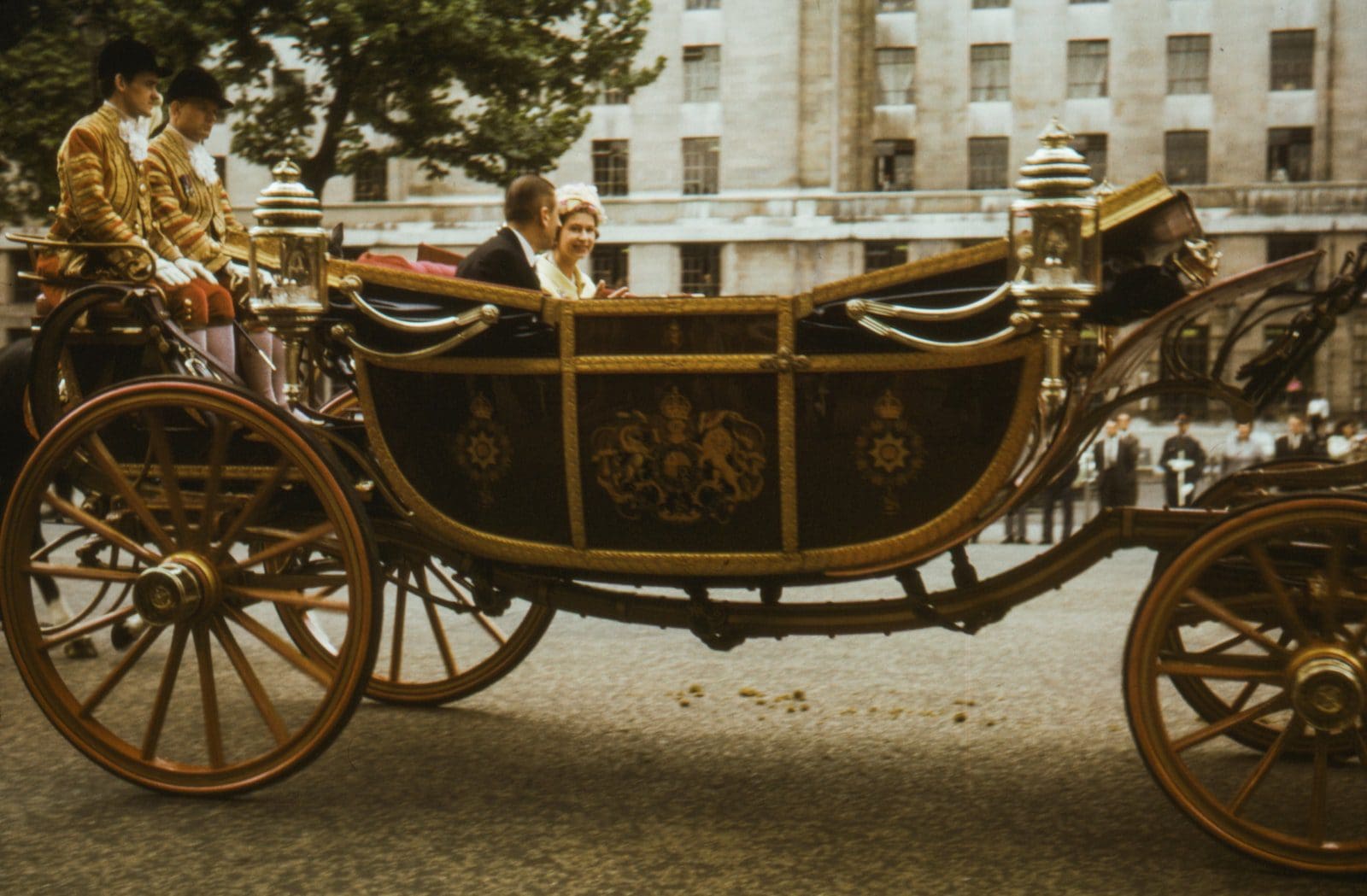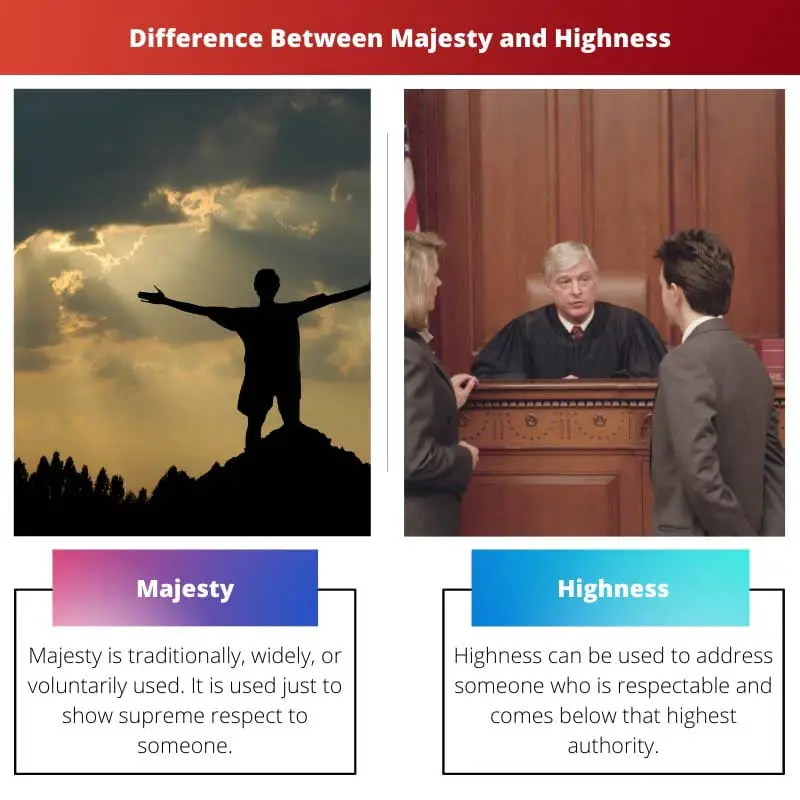From ancient times, English has many pairs or groups of words with very subtle differences.
When we return to traditional and royal words, Majesty and Highness are one pair that confuses many people.
Key Takeaways
- Majesty is a title used to address kings and queens, whereas Highness is used to address other members of the royal family, such as dukes and princes.
- Majesty is a title bestowed by tradition or law, while Highness is a title conferred by the monarch.
- Majesty is considered a higher title than Highness and is used to address the reigning monarch.
Majesty vs Highness
The title “Majesty” is widely used to address monarchs, queens, and emperors; it is a respectful term used to recognize a person’s royal rank and authority. “Highness” is reserved for princes, princesses, and dukes, a respectful term used to honour their high rank and status.

However, it is not very justified to point out a sentence wrong if it contains the use of these words swapped, but the write-up could be much better if we knew the difference and used them correctly.
Comparison Table
| Parameter of Comparison | Majesty | Highness |
|---|---|---|
| When the term is used | Majesty is traditionally, widely, or voluntarily used. It is used to show supreme respect to someone. | Highness is used only by the preference of the royal family member. This means if a member does not want him/ herself to address by Highness, he/she has the authority to stop that. |
| Ranking | Majesty is ranked higher than highness, or it can be said that it is ranked highest, which means majesty is used to address the highest-ranked person. | Highness can be used to address someone who is respectable and comes below that highest authority. |
| In the medieval period | In the medieval period, Majesty was used to address the king or queen of the kingdom in palaces by their people. | Highness addresses princes, princesses, chiefs, or other respectable palace members. |
| Denotation from the term | Majesty (pronounced as măj’ĭs-tē), here capital “M” is used for a sovereign’s dignity, power, and greatness. It can also pertain to the power and sovereignty of God. | Highness (pronounced as hī’nĭs), here capital “H” is used as a title of respect for royalty and power. |
| Significance | Majesty is used to convey respect to the highest power or sovereignty of someone. | Highness is sometimes used to convey honour, arrogance, and high status in society. |
What is Majesty?
To address the ruling monarch, the term majesty is used. This applies to the king and emperor, the queen, and the empress. As a rule, this is addressed to someone with a rank higher than a prince.
If we go back to history, this term refers to almost the same distinction as God as the highest ruler on earth. It is used to address the “highest of all”.
The term was presumed to be used as a contemplation of the influential domain of the monarch and their desire to be extremely distinguished by their subjects.
It can be similar to sovereign power and is used to represent the greatness or splendour characteristics of a royal personality who is running the whole system.

What is Highness?
Highness is frequently used for any royal family member, though not for the monarchs.
The term Highness can be used to refer to the prince, duke, duchess, prince, princess, etc.
But this is not an automatic title because any member of the royal house can ask that their names not be styled or addressed in such a way. This term exudes honour, respect, loftiness, and exalted status.
The crown prince and crown princess can be addressed as “Your Highness” during formal occasions, such as giving a speech.
This is a term that is similar to using Ma’am or Sir. Highness can be used to address any member of the higher society.

Main Differences Between Majesty and Highness
- Majesty is traditionally, widely, or voluntarily used, while Highness is used only according to the preference of the royal family member. It means if a person wants him/ herself not to be addressed by Highness, he/she has the right to stop that.
- Majesty is ranked higher than highness, which means majesty is used to address the highest-ranked person. In contrast, Highness can be addressed to someone who is respectable and comes under that highest authority.
- In a palace in the medieval period, Majesty was used to address the king or queen of the kingdom. In contrast, Highness was used to address princes, princesses, chiefs, and other respectable palace members.
- Majesty (pronounced as măj’ĭs-tē), capital “M” is used for a sovereign’s dignity and greatness. It can also pertain to the power and sovereignty of God. On the other hand, in Highness (pronounced as hī’nĭs), the capital “H” is used as a title of honour for royalty and power.
- The significance of the two terms is also very different. On the one hand, Majesty denotes godly powers and the highest authority; Highness is sometimes used to convey arrogance and honour along with the high status of society.





